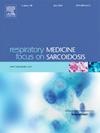Cystic Fibrosis (CF) and Modulators Based Therapy (CFTR) in oral and salivary perspectives: A single center cross-sectional study
IF 3.1
3区 医学
Q2 CARDIAC & CARDIOVASCULAR SYSTEMS
引用次数: 0
Abstract
Objectives
Recently introduced modulators-based therapy for cystic fibrosis (CF), provides new opportunity for better health outcomes and longer life. Single center cross-sectional aim of this study was to determine oral health status of adult CF patients, treated with CFTR modulators (CFTR-T), with no modulators (CFTR-0) in comparison to matched healthy individuals (Ctrl).
Materials and methods
Among 52 CF adult outpatients (male n = 24/female n = 28, 18-49y.) 34 were treated with triple-combination CFTR modulators (elexacaftor/tezacaftor/ivacaftor). Oral assessments included caries prevalence (Decayed, Missing, Filled teeth DMFT), dental hygiene (Plaque Control Record PCR), bleeding on probing (BOP), salivary mucins 5B/7, lysozyme, alpha-amylase (ELISA/PCR tests).
Results
There was statistically significant difference between CF and Ctrl groups in decayed teeth (respectively median (min-max) 1 (0–12) vs. 0 (0–3) p < 0.001), PCR% (22.5 (0–100) vs. 10 (0–60) p < 0.001), BOP% (0 (0–39) vs. 0 (0–30) p < 0.006). Significantly higher concentrations of mucins 5b,7 and lysozyme (0.9 (0.3–20.9), 2.8 (0.9–12.8), 11.1 (5–31), all p < 0.001). In CFTR-T subgroup significantly higher dental plaque (31.5 (1–100) vs. 10 (0–60), p < 0.001) and lysozyme (8.8 (5–15.5), p < 0.001). Noteworthy, CFTR-T recipients gained weight (p = 0.002).
Conclusions
Adult patients with CF showed higher susceptibility to dental caries, poorer oral hygiene and sustain proinflammatory status. However novel modulator therapy reduced the level of salivary mucins and enzymes.
口腔和唾液方面的囊性纤维化(CF)和基于调节剂的治疗(CFTR):一项单中心横断面研究。
目的:最近引入的基于调节剂的囊性纤维化(CF)治疗为更好的健康结果和更长的寿命提供了新的机会。本研究的单中心横断面目的是确定接受CFTR调节剂(CFTR- t)治疗的成年CF患者的口腔健康状况,与对照组(Ctrl)相比,未接受CFTR调节剂(CFTR-0)治疗的CF患者的口腔健康状况。材料与方法:52例CF成年门诊患者(男24例/女28例,18-49岁)。34例采用三联CFTR调制器(elexacaftor/tezacaftor/ivacaftor)治疗。口腔评估包括龋患病率(蛀牙、缺牙、补牙DMFT)、口腔卫生(菌斑控制记录PCR)、探测出血(BOP)、唾液黏液蛋白5B/7、溶菌酶、α -淀粉酶(ELISA/PCR检测)。结果:CF组与对照组龋坏牙数(median (min-max) 1 (0-12) vs. 0(0-3),差异有统计学意义。结论:成年CF患者龋病易感性较高,口腔卫生状况较差,持续促炎状态。然而,新的调节剂治疗降低了唾液粘蛋白和酶的水平。
本文章由计算机程序翻译,如有差异,请以英文原文为准。
求助全文
约1分钟内获得全文
求助全文
来源期刊

Respiratory medicine
医学-呼吸系统
CiteScore
7.50
自引率
0.00%
发文量
199
审稿时长
38 days
期刊介绍:
Respiratory Medicine is an internationally-renowned journal devoted to the rapid publication of clinically-relevant respiratory medicine research. It combines cutting-edge original research with state-of-the-art reviews dealing with all aspects of respiratory diseases and therapeutic interventions. Topics include adult and paediatric medicine, epidemiology, immunology and cell biology, physiology, occupational disorders, and the role of allergens and pollutants.
Respiratory Medicine is increasingly the journal of choice for publication of phased trial work, commenting on effectiveness, dosage and methods of action.
 求助内容:
求助内容: 应助结果提醒方式:
应助结果提醒方式:


